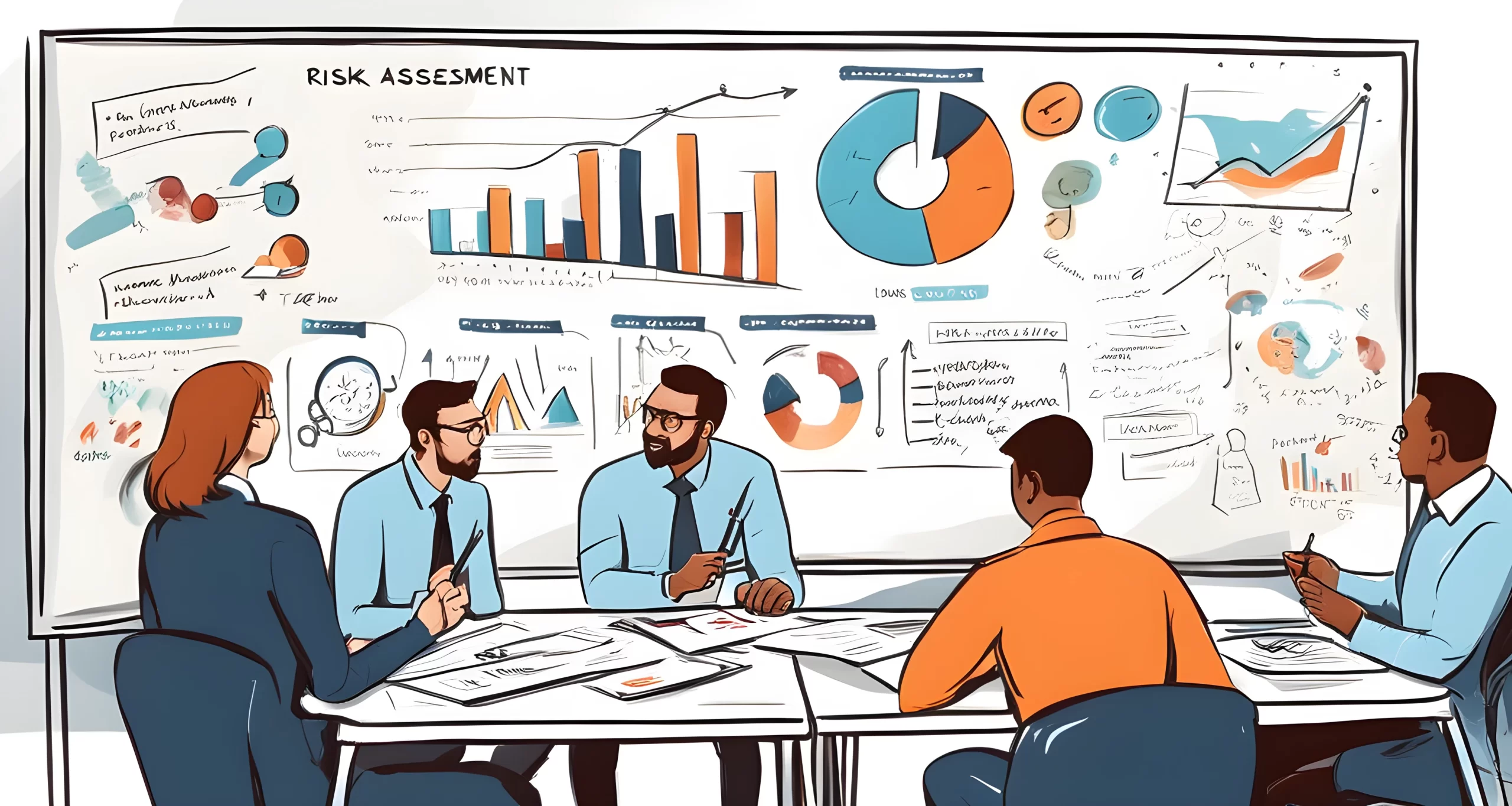Introduction to Proactive Risk Management
Proactive risk management is an essential element of strategic planning for businesses in today’s complex and uncertain environment. It involves the identification and anticipation of potential risks before they occur and the implementation of measures to control or eliminate them. This forward-thinking approach leads to improved resilience and better decision-making, enabling organizations to prioritize and manage risks more effectively.
By taking a proactive approach to risk management, businesses can stay ahead of potential threats and mitigate their impact on operations and financial stability. This not only helps in minimizing losses but also enhances the overall performance of the organization.
Incorporating Success-oriented Risk Management into strategic planning allows businesses to align their risk management efforts with their long-term goals, creating a more robust and sustainable framework for growth. This approach enables organizations to anticipate potential challenges and adapt their strategies accordingly, reducing the likelihood of costly disruptions.
Furthermore, proactive risk management fosters a culture of awareness and preparedness within an organization, leading to greater employee engagement and accountability. When employees are empowered to identify and address potential risks in their areas of responsibility, it creates a more resilient and agile business environment.
In summary, proactive risk management is crucial for businesses seeking to navigate today’s rapidly changing business landscape. By identifying and addressing potential risks before they materialize, organizations can enhance their strategic planning processes, improve decision-making, and ultimately achieve greater success in the long run.

Differences Between Proactive and Reactive Risk Management
Proactive risk management differs from reactive risk management in several key ways. While reactive risk management only responds to risks after they have emerged, proactive risk management aims to prevent potential risks from causing damage in the first place.
One of the main distinctions between the two approaches is the timing of action. Reactive risk management operates on a "wait and see" basis, addressing risks as they arise. In contrast, proactive risk management involves analyzing situations, assessing business processes, and identifying potential drivers of risk before they become a problem.
Another important difference lies in the focus of each approach. Reactive risk management tends to be more focused on short-term solutions, dealing with immediate issues as they come up. On the other hand, proactive risk management takes a more long-term view, aiming to ensure the sustainability of the organization over time.
In Practical risk management solutions, it is clear that by analyzing situations, assessing business processes, and identifying potential drivers of risk, organizations can determine the probability and potential impact of each risk. This information allows risk managers to prioritize risks and develop robust plans to manage them.
Ultimately, modern organizations need proactive risk management to stay ahead of potential threats and ensure their long-term success. By actively working to identify and mitigate risks before they become major issues, organizations can protect their operations and maintain a competitive edge in the market.

Implementing Proactive Risk Management
When it comes to implementing proactive risk management, organizations need to take a systematic approach to effectively identify, assess, and mitigate potential risks. This requires a centralized risk management tool that integrates with existing workflows and policies. By utilizing a tool like Effective Management of Planning Risks, organizations can streamline their risk management processes and ensure that all stakeholders are on the same page.
In addition to a centralized tool, process automation is crucial for proactive risk management. Automation can help in the identification of potential risks, as well as in the implementation of preventive measures. By automating certain tasks, organizations can free up valuable time and resources to focus on proactive risk management strategies.
Data analytics and AI tools also play a pivotal role in proactive risk management. These tools can help organizations gain insights into potential risks, conduct accurate risk assessments, and make informed decisions based on data-driven analyses. By leveraging these technologies, organizations can enhance their ability to predict and mitigate potential risks before they escalate.
Another critical aspect of implementing proactive risk management is the removal of data silos and the establishment of communication channels among stakeholders. Without effective communication, it becomes difficult to identify, assess, and mitigate potential risks in a timely manner. By breaking down data silos and fostering open communication, organizations can ensure that everyone is equipped with the necessary information to contribute to an effective proactive risk management program.
In conclusion, implementing proactive risk management requires a combination of centralized tools, process automation, data analytics, AI tools, and effective communication channels. By taking a systematic approach and leveraging the right tools and technologies, organizations can enhance their ability to identify and mitigate potential risks before they impact strategic planning initiatives.

Strategies for Proactive Risk Management
Proactive risk management is essential for organizations to anticipate and mitigate potential risks before they occur. By incorporating effective strategies into their operations, businesses can minimize the impact of adverse events and maintain a competitive edge in the market. Here are some key strategies for proactive risk management:
Emergency Action Protocols
Developing and implementing emergency action protocols is crucial for preparing an organization to respond effectively to unexpected events. These protocols should outline specific steps to be taken in the event of a crisis, such as natural disasters, security breaches, or other emergencies. By ensuring that employees are well-trained and familiar with these protocols, organizations can minimize the impact of such events on their operations.
Employee Training
Investing in comprehensive employee training programs is another critical strategy for proactive risk management. By providing employees with the knowledge and skills they need to identify and address potential risks in their day-to-day activities, organizations can create a culture of risk awareness and accountability. This can help prevent costly errors and ensure that employees are equipped to respond effectively to potential threats.
Robust Cybersecurity Controls
In today’s digital age, cybersecurity is a top priority for organizations looking to protect sensitive information and maintain the trust of their customers. Implementing robust cybersecurity controls, such as firewalls, encryption, and multi-factor authentication, is essential for mitigating the risk of data breaches and cyber attacks. By staying ahead of potential threats, organizations can safeguard their valuable assets and maintain the integrity of their operations.
By incorporating risk management into strategic planning Business risk prevention methods, organizations can prioritize and manage risks more effectively. This approach allows businesses to align their risk management efforts with their overall business objectives, ensuring that resources are allocated strategically to address the most pressing risks. In doing so, organizations can position themselves for long-term success in an increasingly complex and unpredictable business environment.
In conclusion, proactive risk management is a critical component of strategic planning for organizations seeking to thrive in today’s dynamic business landscape. By implementing effective strategies such as emergency action protocols, employee training, and robust cybersecurity controls, businesses can anticipate and mitigate potential risks before they escalate into major crises. This proactive approach not only helps protect organizations from adverse events but also enables them to capitalize on new opportunities for growth and innovation.

Incorporating Risk Management into Strategic Planning
Modern organizations need to incorporate risk management into strategic planning to prevent damage and ensure long-term sustainability. By analyzing situations, assessing business processes, and identifying drivers of risk, organizations can determine the probability and potential impact of each risk. This information allows risk managers to prioritize risks and develop robust plans to manage them.
Importance of Strategic Planning
Strategic planning is essential for organizations to set clear goals and objectives, allocate resources effectively, and adapt to changing business environments. However, without considering potential risks, strategic plans may be vulnerable to unforeseen events that can derail the organization’s progress. By integrating risk management into strategic planning, organizations can proactively identify and address potential threats, ensuring that their strategic initiatives are resilient in the face of uncertainty.
Identifying Risks
Incorporating risk management into strategic planning involves a systematic approach to identifying potential risks that could impact the organization’s ability to achieve its strategic objectives. This includes conducting thorough risk assessments, considering both internal and external factors, and leveraging data-driven insights to anticipate potential challenges. By understanding the specific risks facing the organization, leaders can make informed decisions about resource allocation and risk mitigation strategies.
Prioritizing Risks
Not all risks are created equal, and it is essential for organizations to prioritize their risks based on their potential impact and likelihood of occurrence. This allows organizations to focus their resources on addressing the most significant threats while also developing contingency plans for lower-priority risks. Prioritizing risks enables organizations to take a proactive approach to risk management, ensuring that they are prepared for potential disruptions.
Strategic Risk Handling Approaches
Strategic planning should include considerations for various risk handling approaches such as risk avoidance, risk reduction, risk transfer, or risk acceptance. By integrating these approaches into strategic planning, organizations can develop comprehensive strategies for managing diverse types of risks effectively. This provides a holistic view of potential threats and enables organizations to make informed decisions about how best to address or mitigate each risk.
In conclusion, incorporating risk management into strategic planning is critical for modern organizations looking to proactively manage uncertainty and safeguard their long-term success. By prioritizing risk identification, assessment, and mitigation within their strategic initiatives, organizations can ensure that they are well-prepared to navigate challenges and capitalize on opportunities in an ever-evolving business landscape.
Remember you have to add this link Strategic Risk Handling Approaches inside the text!
FAQ
What is proactive risk management?
Proactive risk management involves identifying and anticipating potential risks before they occur and implementing measures to control or eliminate them. this approach leads to improved resilience and better decision-making for organizations.
How does proactive risk management differ from reactive risk management?
Proactive risk management focuses on preventing risks before they occur, while reactive risk management only responds to risks after they have emerged. proactive risk management is essential for long-term sustainability.
What tools and technologies are necessary for implementing proactive risk management?
Implementing proactive risk management requires a centralized risk management tool that integrates with existing workflows, process automation, data analytics, ai tools for effective risk analyses, and the removal of data silos. communication channels among stakeholders are also crucial for an effective proactive risk management program.
What are some examples of proactive risk management strategies?
Examples of proactive risk management include emergency action protocols, employee training, and robust cybersecurity controls. these strategies aim to remain prepared for adverse events and assure fast action if they occur.
